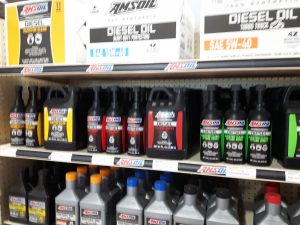Diesel Fuel Additives – Not an Option in Diesel Ownership
Years of reviewing the effects of modern diesel fuel, mechanical issues, costs and designs of injectors, pumps, failures keeps the topic of the misunderstood fuel additive fresh in mind.
Impressive In The Field
As an AMSOIL dealer, one product I rank in the top three where overly positive feedback is almost always given at each sale is our Diesel Injector Clean (and lubricant). Of course many of those sales were started because I suggested to the customer to try our brand over whatever else they were using. And the majority of the time the customer was not using any at all! But the results seem to be instant thus the higher level of feedback.
What To Expect
I could list all the sales info, product points to know, etc. but you can easily find all that in the product listing or technical data sheet (printable PDF). I wanted to state some of the instant feedback and some savings you can expect!
- Increased mileage beyond any averages AMSOIL claims. I hear 2 to 3 more MPG’s although that’s not advertised.
- Quieter engine
- Regens cut in half – That alone is worth it! Unique to AMSOIL’s formula.
- More power under load – You’ll notice more with the Cetane Boost
- Solved sluggishness when passing
- Skip past expected injector failure mileage to next to none
- RV’s – amazingly easier starts on seldom used engines
- Longer fuel filter performance
- Less water buildup in tank
Lubricity
This is the reason it’s not optional. Not AMSOIL but the industry says you need a lubricant added to every tank of fuel.
AMSOIL recently posted about folks using 2-stroke oil in the fuel. They admitted it worked but only offers a fraction of the lubricant needed especially in modern injectors which rely on products with years of development. The results can be in the thousands saved on repair or replacement costs.
A fuel additive supplier who visited at one of our AMSOIL dealer conventions made it clear. He used a 2015 Chevy Durmax diesel for example. He said in 10 year ownership you will ether spend on average $750 on fuel additives or $6000 to $10,000 in injector repair.
Much of the failure is because the fuel or the over the counter additive doesn’t address corrosion within the injector. The wear resulting which is not visible without a microscope can be devastating to your engines efficiency. The injectors these days usually only have 1 to 2 microns of space around them so you cannot afford even the slightest dirt causing wear or corrosion from a lack of proper additive.
Best way to buy in Sioux Falls
I keep a healthy supply at my shop at Exit 73 and also at Stan Houston’s on W. 12th St.
The best way to buy is get one 16 oz. bottle and the half gallon as the refill. The savings with the half-gallon is like buying four 160-ounce bottles but paying for three. A sight window is on all bottles assisting with the proper dosage. And the best part is one ounce (1OZ) treats five gallons! It’s a great bargain even at full retail.
Of course you can buy through our website – AMSOIL Diesel Injector Clean Product Code ADF.
We also have 5-gallon sizes for OTR Trucking operations and a small 8 ounce bottle (Case of 6) for passenger car diesels.

